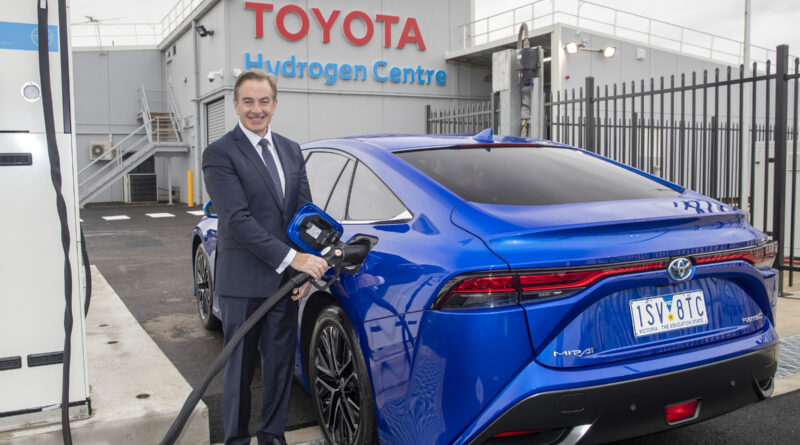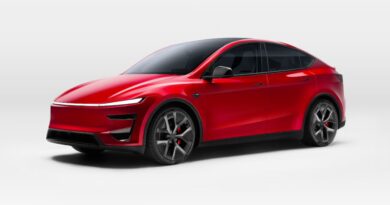Policies, infrastructure over incentives for EVs, FCEVs: Toyota
Toyota has called on the Federal Government to invest in EV and hydrogen fuel cell infrastructure and formulate policies to encourage private investment into the crucial piece of the zero emissions puzzle.
In opening its Hydrogen Centre in Melbourne – with Australia’s largest public hydrogen refueling station – Toyota Australia president and CEO Matthew Callachor (pictured above refueling a Mirai hydrogen electric fuel cell) said it was time for politicians to step up as car makers shifted their focus to electrified vehicles.
While apparently accepting that Australian governments were unwilling to directly subsidise EVs and other zero emissions vehicles – some states are even looking to penalise them with an EV-specific tax – Callachor said there was still plenty that could be done.
“We’d prefer the government concentrate on basically the infrastructure side, policies and developments on that point at this juncture,” said Callachor when asked about electric car incentives.
“There are many countries that offer substantial incentives to buy, but in terms of our pure development at the moment, my sort of priority would be to try to make sure the infrastructure is in place … as step one.”
While Toyota is heavily investing in hydrogen technology locally, he conceded it was “too early for hydrogen moving forward” but that is should be on the radar longer term.
He also said the Government would have to play the long game.
“If the government wishes to offer incentives for things like battery electrics or hydrogen that’s good, that’d be great, but the thing is it’s got to be a step by step progression.”
Toyota says a lack of infrastructure is “the most limiting thing at the moment in regards to hydrogen uptake”.
But as celebrity scientist Dr Karl Kruszelnicki pointed out, the world’s first car trip – in the original three-wheeled Mercedes-Benz –took place without a single petrol station anywhere in the world.
In other words, you have to start somewhere and infrastructure can easily be developed with planning and a vision.
“We’re a lot further along that pathway,” said Kruszelnicki.




